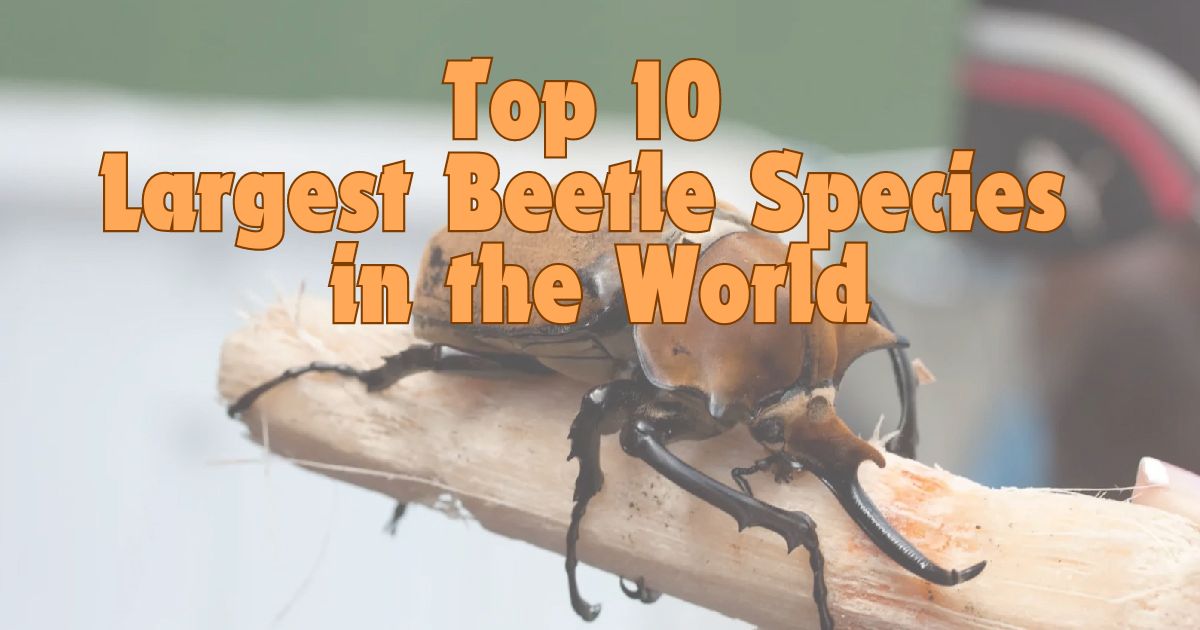The worldwide biodiversity of beetles is astonishingly diverse, with around 350,000 recorded organisms, each designed to thrive in distinct conditions. Among these are a few true colossal among humanity’s largest beetles, who strike astonishment with their huge stature and interesting nature. Beetles like these in addition challenge our understanding of animal life, and yet they also perform essential functions in their environments. This piece goes into the 10 largest beetle species, discussing their traits, habitats, and the way their size is important in their ability to survive and adaption methods.
10. Figeater Beetle
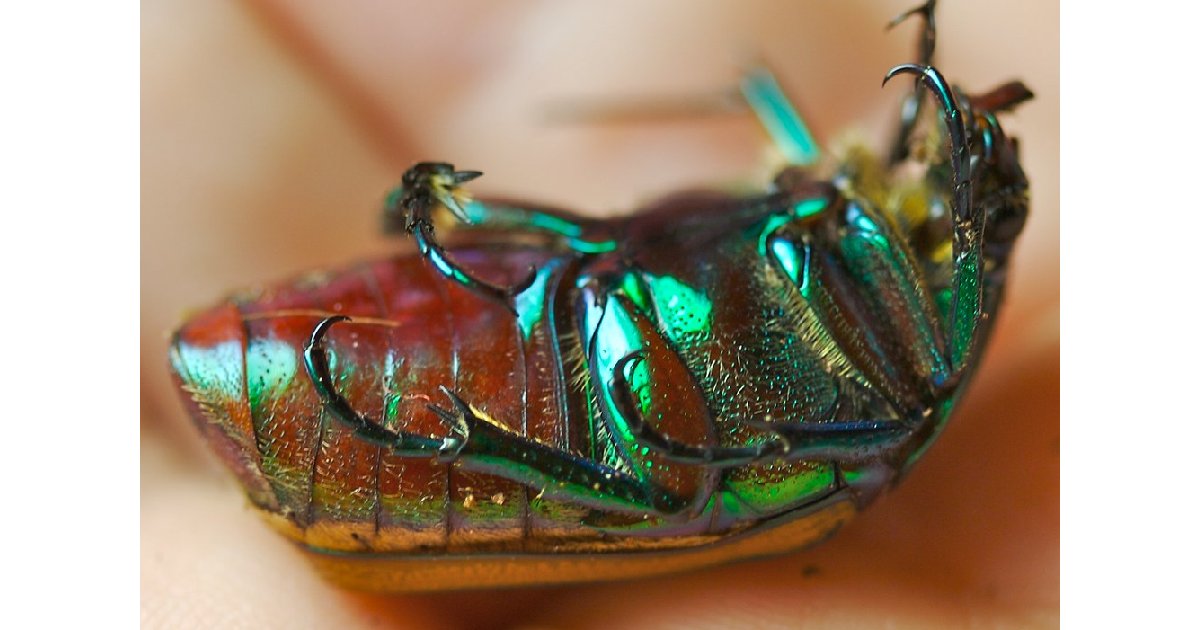
- Length: Up to 35mm
- Weight: Relatively light for their size
- Key Features: Bright green color, loud buzzing flight
The Figeater Beetle, which is most commonly spotted humming energetically throughout the end of summer skies, is distinguished by its vivid green sheen and enormous body rather than its real dimensions. These beetles, which are widespread throughout the American South, eat soft fruits and often appear in gardens with trees of fruit. Considering the size they possess, they are non-toxic to people and help decompose prematurely ripe or damaged fruits, assisting in the digestion of nutrients.
Its shimmering green color additionally makes it visually appealing. However, it also serves as protection among the foliage, safeguarding them from attackers. The Figeater’s flying, while loud and appearing ungainly, is a successful means of fast traveling amongst meals and prospective mates, guaranteeing that they survive and reproduce across their territory.
9. Pine Sawyer Beetle
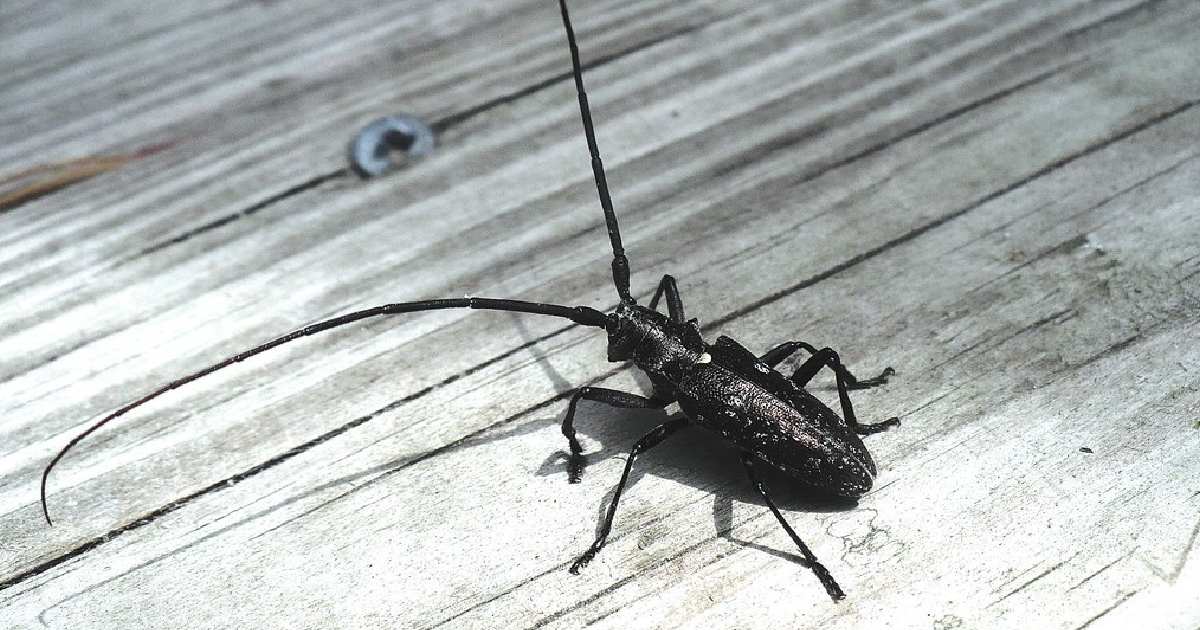
- Length: Up to 45mm
- Weight: Varies
- Key Features: Long antennae, known for damaging pine trees
Pine Sawyer Beetles are distinguished by their extraordinarily lengthy antennae, which can be double in size of their entire bodies. These beetles, which can be encountered across North America, are commonly regarded as a nuisance because the eggs they produce dig into and harm the bark of pine trees. Adult beetles are normally harmless, although they may pose disruptive as they enter homes.
Beetles such as these are important markers of forest health and are frequently investigated to comprehend pest behaviors in woodland environments. Their presence in huge numbers can indicate hazardous forests, which could give rise to management initiatives. Regardless of their pest classification, Pine Sawyer Beetles provide an essential function in forestry maintenance and succession by attacking impaired or dead trees.
8. Atlas Beetle
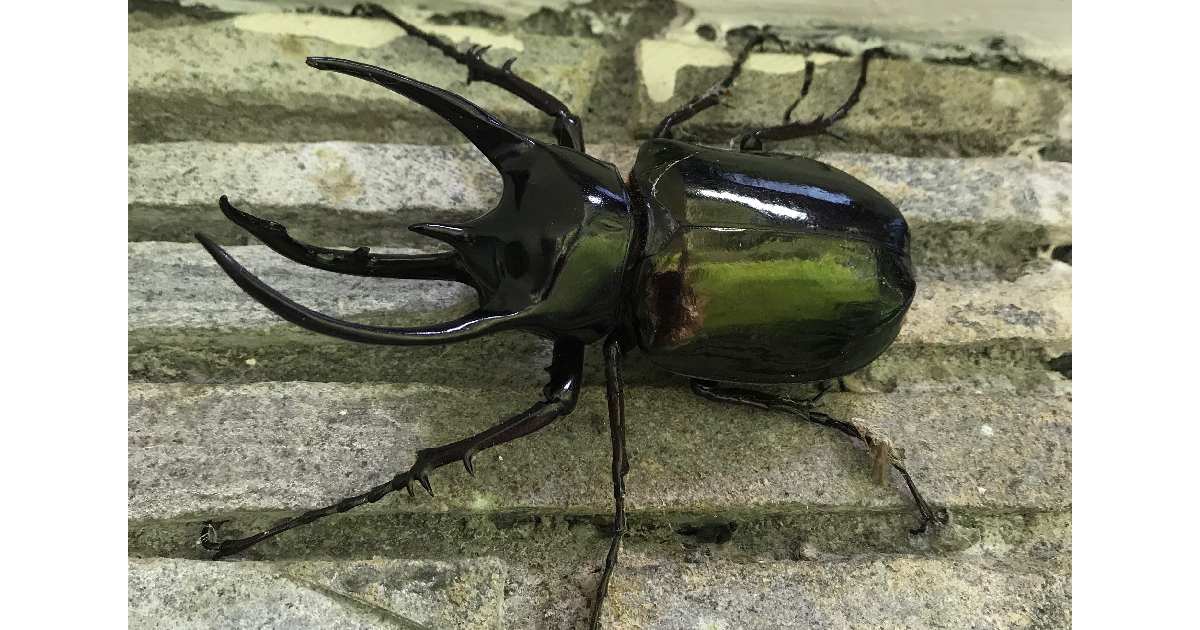
- Length: Up to 60mm
- Weight: Moderate
- Key Features: Three prominent horns, strong mandibles
The Atlas Beetle, derived from the titan doomed to hold aloft the sky, is an enormous threat in Southeast Asia’s woodlands. They are impressive because they have three conspicuous spires that males utilize in combat for territory and breeding rights. Their insect larval stage may last for a while, with food developing in disintegrating logs until coming as adults.
Atlas Beetles use their powerful jaws not only for battle but also to dig and feast on tree nectar and flowers. Their entire life cycle, from larvae to adults, provides insights into the condition of tropical forests, which makes them a species of importance to both scientific studies and conservation initiatives. It belongs to the Dynastinae subfamily of rhinoceros beetles, together with the Atlas beetle (Chalcosoma atlas) and the standard rhinoceros beetle (Xylotrupes ulysses).
7. Stag Beetle
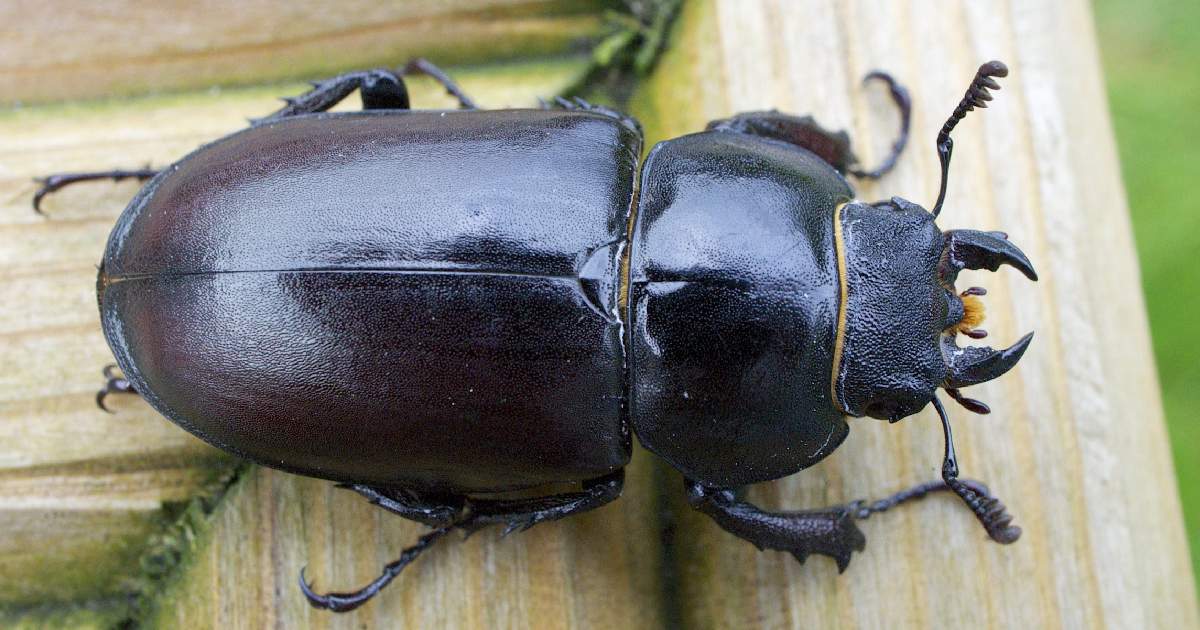
- Length: Up to 75mm
- Weight: Light
- Key Features: Large mandibles resembling deer antlers
Stag beetles can be identified by their large mouths, which are employed in male-to-male battles throughout the time of mating. These beetles are primarily found in European forests, with populations stretching from Britain to Asia Minor. The eggs they produce dwell in and devour rotting wood, which contributes significantly to the cycling of nutrients in their habitats.
The fall in Stag Beetle numbers has sparked environmental concerns. It is mostly due to habitat degradation. Maintaining old forests and preserving the supply of decaying timber is critical for sustaining the number and ecological importance of these intriguing beetles.
6. Elephant Beetle
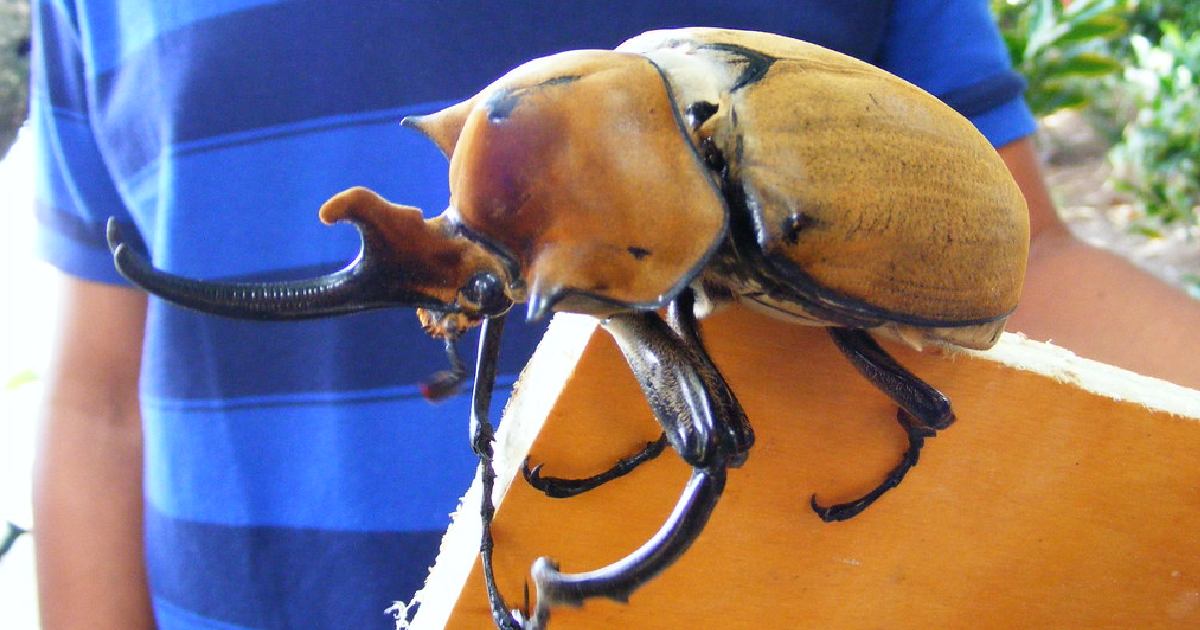
- Length: Up to 120mm
- Weight: Hefty for beetles
- Key Features: Large, black body; males have prominent horns
Elephant beetles are huge insects noticed predominantly in Central and South American jungles. They are one of the most recognizable beetle species due to their amazing size and characteristic horn, which is employed in conflicts for mates. These giants are usually nocturnal and rely on the nectar of specific trees contributing to their ecological systems, which maintain the plant cycle.
Males’ spectacular conflicts over territories and females attract ecologists and photographers. Drawing curiosity about the protection challenges confronting these beetles. Keeping their habitats is critical for sustaining the ecological equilibrium that allows these beetles to survive and grow.
5. Goliath Beetle
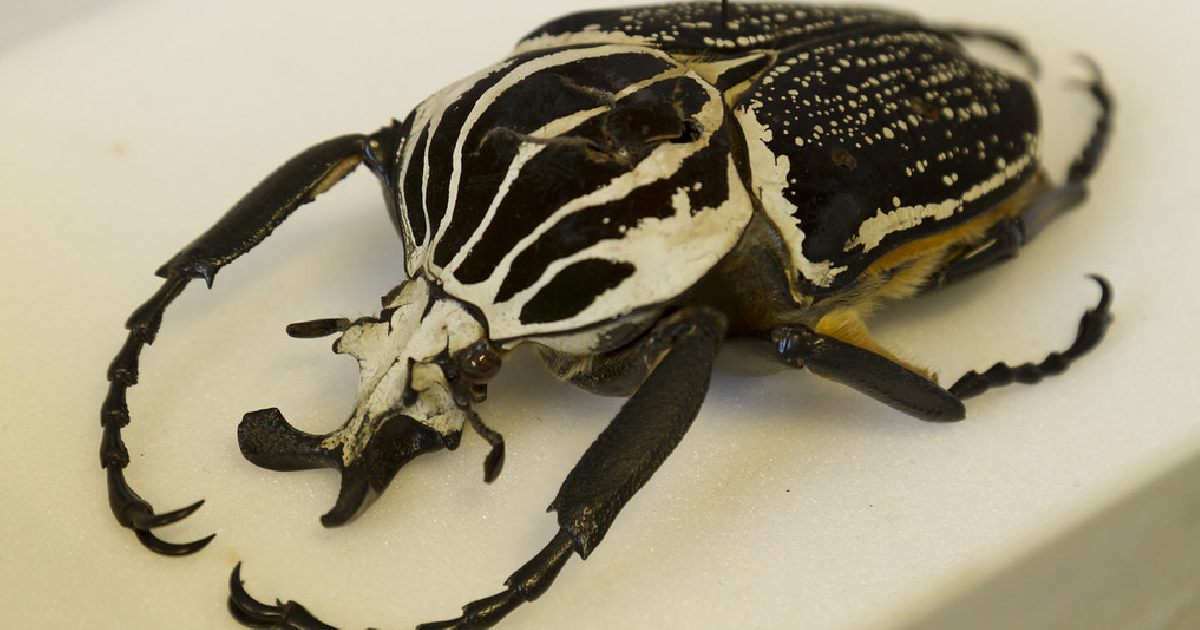
- Length: Up to 120mm
- Weight: Up to 100 grams in the larval stage
- Key Features: Heavyweight of the beetle world, complex patterns on exoskeleton
Goliath Beetles are not just among the world’s largest beetles, but also among the heaviest insects. These beetles, found in Africa’s rainforests, can grow to be 120mm long and weigh more than most adult beetles during their larval stage. They have exquisite designs that decorate their exoskeletons, which make them popular amongst enthusiasts and nature lovers.
The nutrition of these beetles varies substantially from larva to maturity. As larvae, they eat foods high in protein such as rotting wood and plant materials, whereas adults eat mostly sap from trees and fruit. Their amazing size and unusual feeding needs underscore their specialized position in their ecosystem, as well as the problems they confront due to loss of habitat and environmental changes.
4. Capricorn Beetle
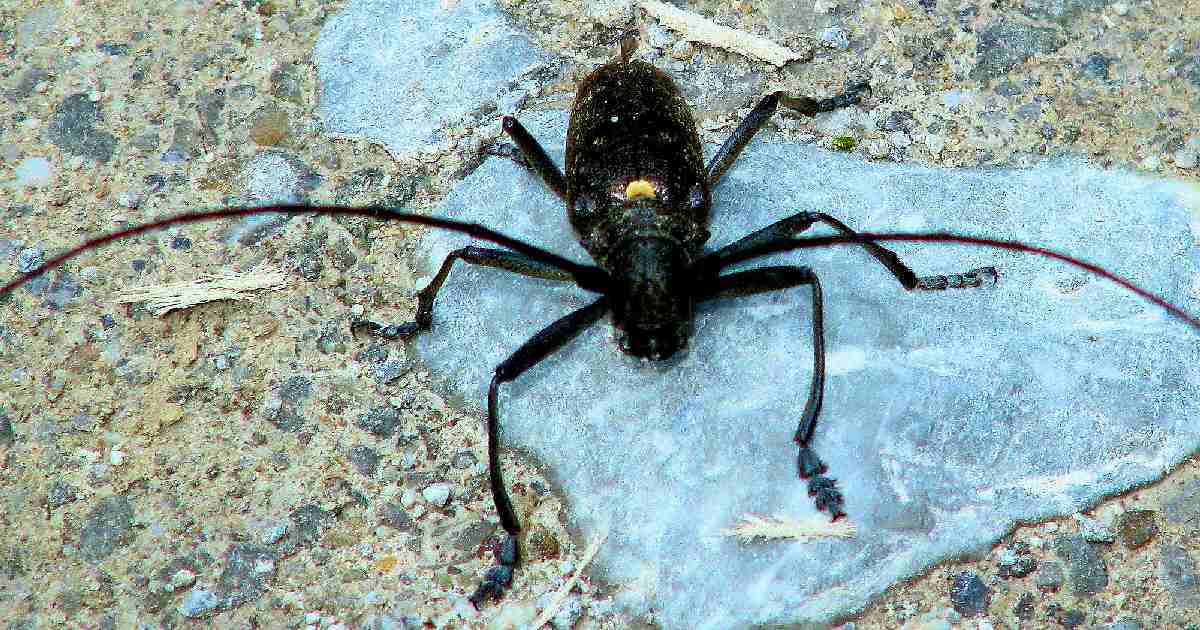
- Length: Up to 150mm
- Weight: Variable
- Key Features: Long antennae, preference for decaying wood
Capricorn Beetles are a group known for their attraction to decaying wood where they lay their eggs. Found across Europe and Asia, these beetles help decompose dead wood, returning nutrients to the soil and aiding forest regeneration. Their larval stages are crucial for breaking down tough wood fibers, a process that can take several years.
Their significant role in the ecosystem highlights the importance of dead wood as a resource for biodiversity. Efforts to remove fallen timber can often disrupt these processes. Thus, leading to a decrease in habitat quality for these and other species that rely on decaying wood for survival.
3. Titan Beetle
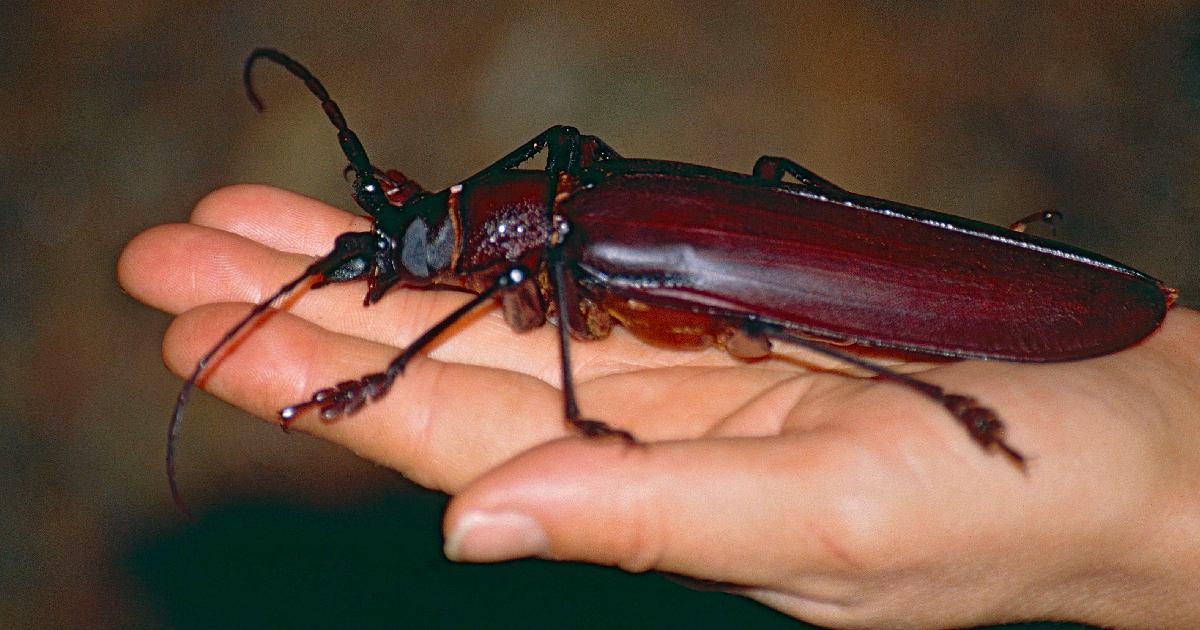
- Length: Up to 165mm
- Weight: Robust
- Key Features: Among the largest beetles, strong mandibles capable of snapping pencils
The titan beetles from South America are an impressive sight. Known for its incredible size and powerful mandibles strong enough to snap a pencil in half, this beetle is one of the largest, measuring up to 165mm. They are found in some of the most remote areas of the Amazon rainforest, often making them difficult to study.
The titan beetle is part of the longhorn beetle family, Cerambycidae, and is the only species in its genus (known as a monotypic genus). These beetles are not only fascinating due to their size but also because little is known about their breeding habits or larval stage, which is believed to occur deep underground. The mystery surrounding their life cycle adds to the allure that draws entomologists and adventurers alike to seek them out.
2. Long-Horned Beetle
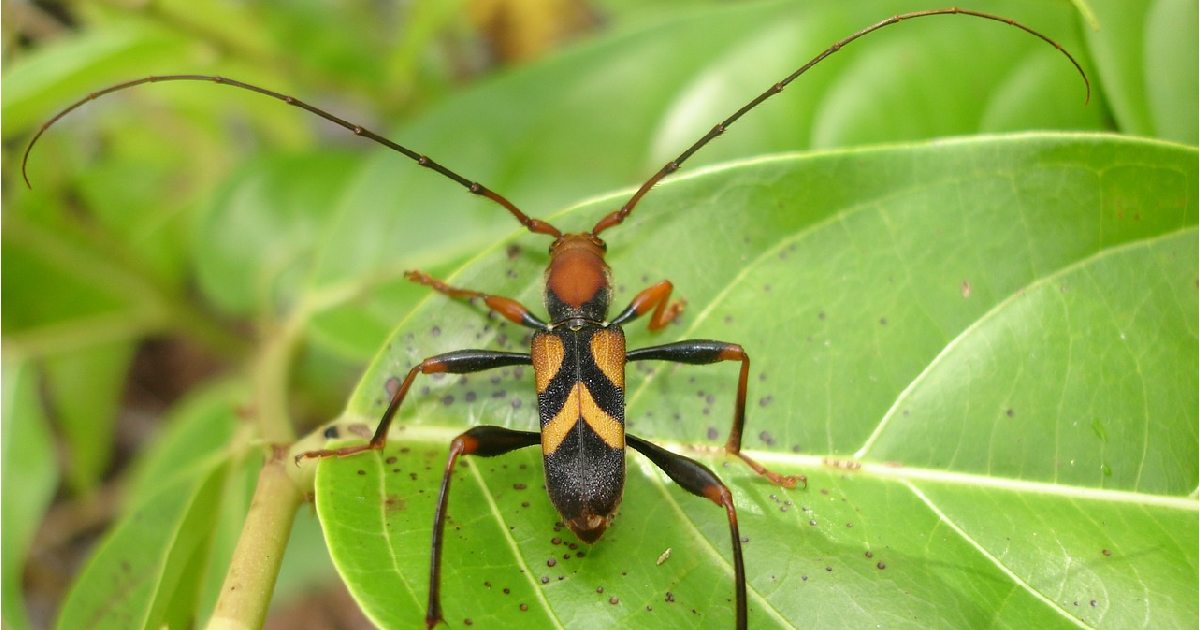
- Length: Varies widely, up to 170mm including antennae
- Weight: Light
- Key Features: Extremely long antennae, wood-boring larvae
Long-horned beetles are named for their strikingly long antennae, often exceeding their body lengths, and are found worldwide. These beetles’ larvae are known wood-borers, making them important players in the decomposition of dead wood. Furthermore, they are also pests in lumber industries and forestry due to their destructive feeding habits.
These beetles are not only key to nutrient recycling in their habitats but also serve as important bioindicators. Their presence and population dynamics can help gauge the health of forest ecosystems. Efforts to manage their impact on commercial wood operations must balance ecological roles with economic needs, showcasing the complex relationship between humans and insects.
1. Hercules Beetle
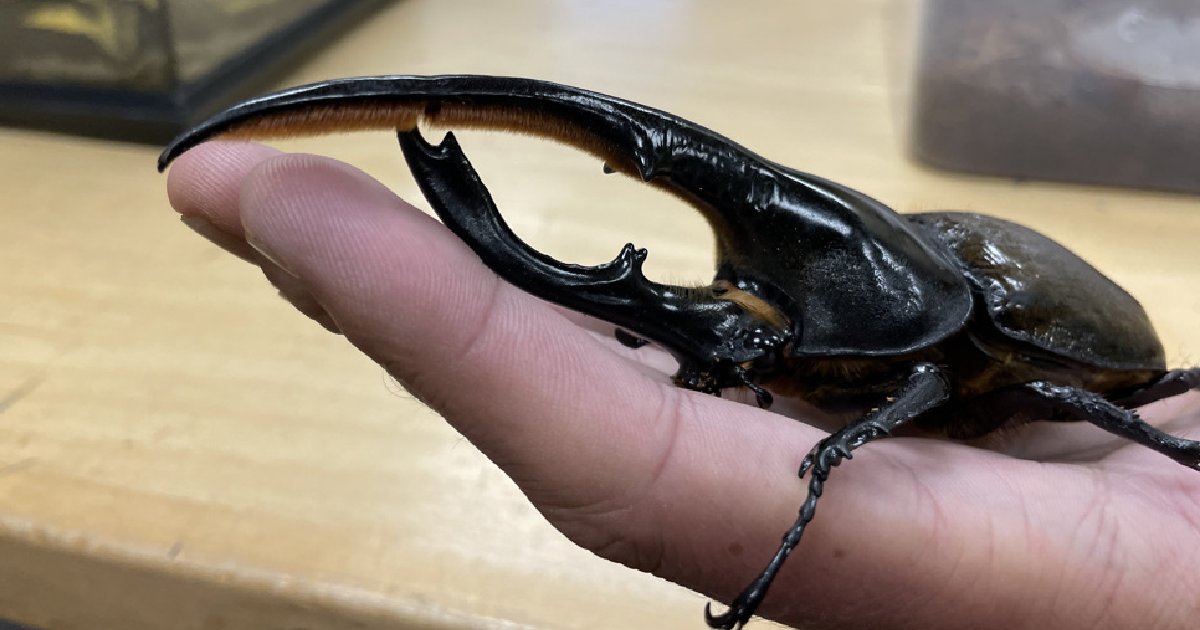
- Length: Up to 170mm including horns
- Weight: Moderate
- Key Features: Pronounced horn; can change color based on humidity
The Hercules Beetle, found in the rainforests of Central America, is among the world’s largest beetles. Its most distinctive feature is the large horn protruding from the extreme lengths of Hercules beetle specimens result from their massive horns, which are only found on male beetles and are used to fight other males during disputes over mate’s heads, wrestle other males for feeding territories or mates. Male Hercules beetles can grow as long as 19 centimeters, equal to the length of a new pencil and almost 20 times larger than the common seven-spot ladybird found in the UK.
Remarkably, the color of their exoskeleton can change depending on the ambient humidity, adding to their mystique. These beetles’ larval stage can last up to two years, with the larvae growing in decaying wood. The adult beetles, however, have a much shorter lifespan, emphasizing the importance of their growth and developmental stages for their survival and reproduction. When considering overall length, the Hercules beetle ( Dynastes hercules ) holds the title of being the largest beetle species on the planet.
Conclusion
The world’s largest beetles demonstrate the insects’ amazing diversity and adaptability. The battling males of the stag and Hercules beetles and the wood-boring caterpillars of the Capricorn and Pine Sawyer beetles adapt to their environments differently. Being acquainted with these giants teaches people about the complexities of ecological relationships and the need for preservation efforts to maintain these incredible species and their habitats. As scientists continue to discover and examine them, we learn more about their critical roles in ecology and our planet’s inherent interconnection.
Frequently Asked Questions (FAQs)
What is the world’s largest beetle?
The Hercules Beetle (Dynastes hercules) is considered the world’s largest beetle. It is renowned for its impressive size, which can reach up to 170 mm including its horn, and its remarkable strength, capable of lifting over 850 times its body weight.
What is the biggest and strongest beetle?
The Hercules Beetle is both the biggest and strongest beetle. It can grow up to 170 mm including its horn and is known for its incredible strength, able to move and lift objects many times heavier than itself.
What is the heaviest adult beetle in the world?
Rhinoceros beetles are the heaviest insects in the world. The Hercules beetle (Dynastes Hercules) is named after the Greek god Hercules, who was admired for his immense power. They come from the Dynastinae genus of rhinoceros beetles, along with the Atlas beetle (Chalcosoma atlas) and the common rhinoceros beetle (Xylotrupes ulysses).
Is the Titanus giganteus the largest beetle in the world?
No, the Titanus giganteus, or Titan Beetle, is not the largest beetle in the world by length but is one of the largest, reaching up to 165 mm. It is known for its robust size and formidable mandibles, making it one of the largest beetles in terms of physical bulk.
What is the most aggressive beetle species?
The Stag Beetle is often considered one of the most aggressive beetle species, especially during mating season. Male Stag Beetles use their large, antler-like mandibles to fight over mates and territory, displaying aggressive behaviors that are quite notable during these conflicts.

